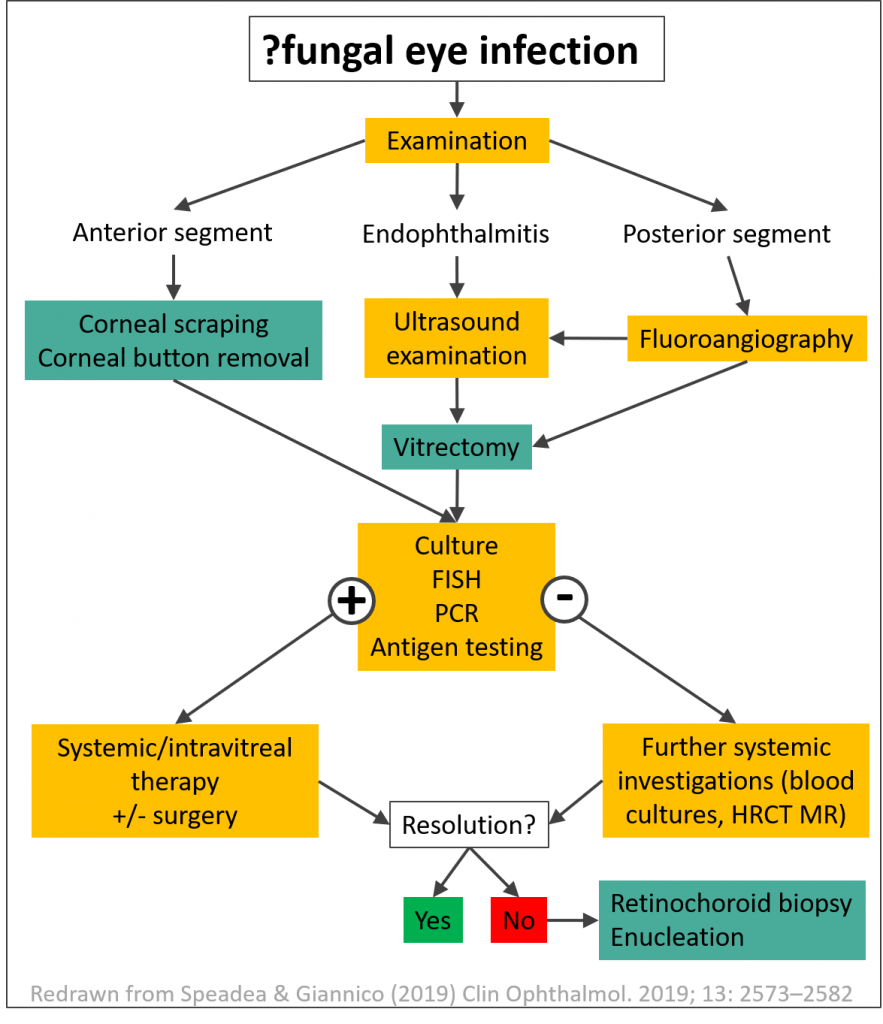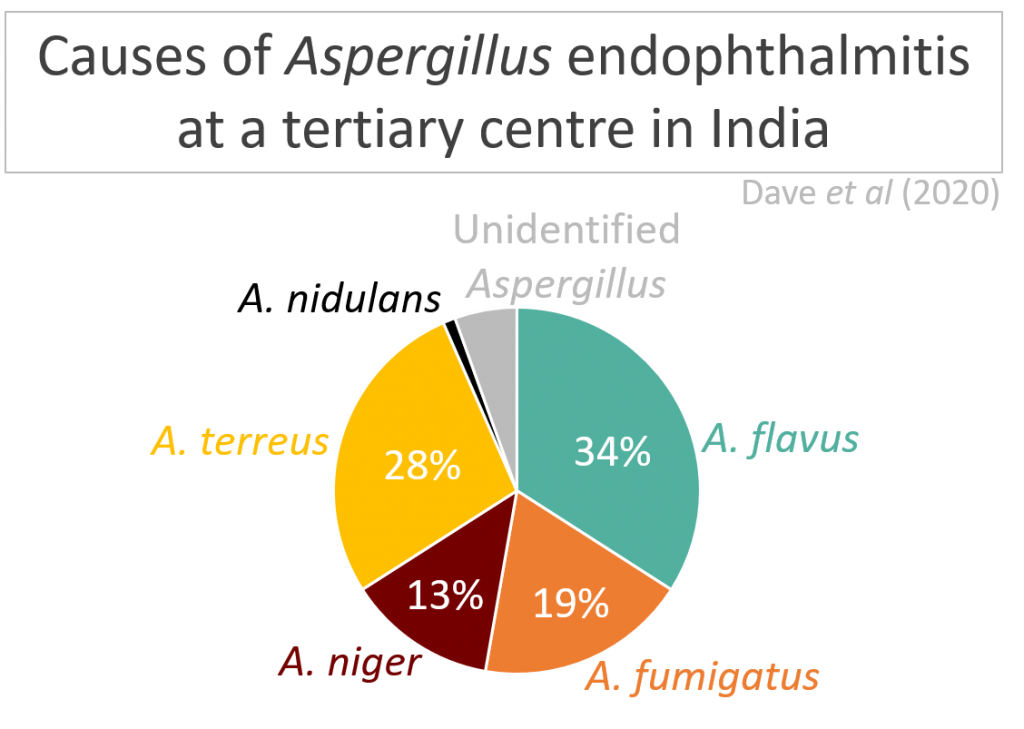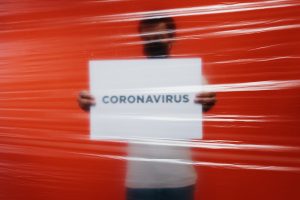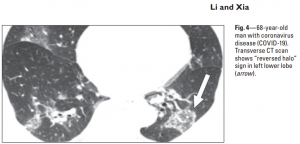Submitted by Aspergillus Administrator on 8 April 2020
While less common than bacterial eye infections, fungal infections can lead to worse outcomes, especially if diagnosis and treatment are delayed.
Corneal ulcers (keratitis) are a significant public health problem in low-resource settings where many people work in industries (e.g. farming, forestry) with a high risk of traumatic onculation of fungi into the eye, and patients may present later in the course of infection due to poverty. Prajna et al (2017) shared their experiences of carrying out clinical research at Aravind Eye Hospital (India) with these challenges.
Many systemic formulations of antifungals have limited penetration into the eyes. Some antifungals can be administered intravitreally, but amphotericin B can cause retinal toxicity at higher doses (Payne et al, 2010). Voriconazole is less toxic but requires more frequent injection(every 24 hours) than amphotericin B (every 48 hours).
Fungal endophthalmitis is the infection of the interior parts of the eye (i.e. aqueous or vitreous humour), most commonly by Candida or Aspergillus. Two recent papers give insight into Aspergillus endophthalmitis.
Dr Leopoldo Spadea and Dr Maria Giannico recently published a systematic review of the available diagnostic and management strategies for treating Aspergillus endophthalmitis. While there is a lack of serological tests, vitreous culture is often positive. Culture should be performed before starting antifungal treatment. Ultrasound examination is mandatory when the fundus cannot be explored by retinography.
Antifungals should be administered for at least a month, either systemically, intravitreally or in combination. Amphotericin B can cause retinal toxicity (especially at higher doses). Systemic voriconazole has relatively good penetration into the ocular compartment. Vitrectomy is often required, and enucleation may even be needed. Steroids should be used with caution as they can cause worsening of the infection.
- · Read the paper: Spadea & Giannico (2019) Diagnostic and Management Strategies of Aspergillus Endophthalmitis: Current Insights

Dr Vivek Dave and colleagues in India presented a large series of 91 immunocompetent patients with Aspergillus endophthalmitis. The most common causes were trauma (46%), surgery (42%) and endogenous (11%). 51 patients received amphotericin B only, 33 received voriconazole only, and 7 received both. They found that early vitrectomy was superior to vitreous tap alone, but outcomes were often poor. Corneal involvement and presence of fungal hyphae on microscopy were associated with worse outcomes.
- Read the paper: Dave et al (2020) Aspergillus Endophthalmitis: Clinical Presentations and Factors Determining Outcomes

News archives
-
Title
Date


